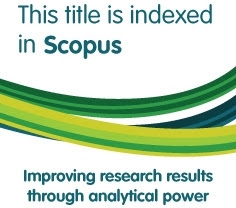Memaknai Pengasingan Orang Melayu-Indonesia di Ceylon, Sri Lanka
Abstract
Ronit Ricci. 2019. Banishment and Belonging: Exile and Diaspora in Sarandib, Lanka, and Ceylon. Cambridge: Cambridge University Press.
This essay reviews a book that explores Sri Lanka, one of the historical destinations of colonial exile, with a focus on the literary traditions of the Malay people, particularly Muslims. By using manuscripts written by exiles as the primary source, this work emphasizes contextual studies on dimensions of humanity and culture (manuscript cultures) to explain the experiences of exiles in the formation of the diaspora tradition of the Malay Muslim community. These sources prove that despite being forced to leave their homeland, the exiles were able to construct a religious paradigm that granted them the ability to deal with these political consequences while somehow countering the colonialists’ narratives. Therefore, this book suggests that due to the significant influence of Malay, particularly Islam, this region cannot be disregarded on the map of Southeast Asian Islamic studies. Additionally, this work implies that the concept of “Malay” is not only limited to a region of Southeast Asia today but also includes other regions with a history and culture of producing Malay manuscripts, such as Sri Lanka.
Keywords
Full Text:
PDFReferences
Azra, Azyumardi. 2004. The Origins of Islamic Reformism in Southeast Asia: Networks of Malay-Indonesian and Middle Eastern “Ulamā” in the Seventeenth and Eighteenth Centuries. Australia-Honolulu: Allen & Unwin and University of Hawai’i Press.
Carey, Peter. 2008. The Power of Prophecy: Prince Dipanagara and the End of an Old Order in Java, 1785-1855. 2nd ed. Leiden: KITLV Press.
Chambert-loir, Henri. 2013. 1–3 Naik Haji Di Masa Silam: Kisah-Kisah Orang Indonesia Naik Haji. Jakarta: KPG-EFEO, Forum Jakarta-Paris, Perpusnas RI.
“Digitising Malay Writing in Sri Lanka (EAP609).” 2012. “The British Library, Endangered Archives Programme.” https://eap.bl.uk/project/EAP609.
Fathurahman, Oman. 2012a. Ithāf Al-Dhakī: Tafsir Wahdatul Wujud Bagi Muslim Nusantara. Bandung-Jakarta: Mizan-EFEO.
———. 2012b. “Memahami Pribumisasi Islam Melalui Kitab Seribu Masalah.” Studia Islamika 19(3): 597–609.
———. 2015. Filologi Indonesia: Teori dan Metode. Jakarta: Prenada Media Group.
———. 2018. “Female Indonesian Sufis: Shattariya Murids in the 18th and 19th Centuries in Java.” Kyoto Bulletin of Islamic Area Studies (11): 40–67.
Hamid, Abu. 1994. Syekh Yusuf: Seorang Ulama, Sufi Dan Pejuang. Jakarta: Yayasan Obor Indonesia.
Lindsay, Jennifer, R.M. Soetanto, and Alan Feinstein. 1994. Kraton Yogyakarta (Katalog Induk Naskah-Naskah Nusantara, Jld. 2). Jakarta: Yayasan Obor Indonesia.
Lubis, Nabilah. 1999. Menyingkap Intisari Segala Rahasia: Syekh Yusuf Al-Taj Al-Makasari. Jakarta: Mizan-EFEO.
Ngariksa 23. 2020. “Siapa Berhaji Abaikan Menteri?” https://www.youtube.com/watch?v=c7lcs2S0NMA (July 27, 2022).
PPIM UIN Jakarta, and CSMC Hamburg University. 2022. “Digital Repository of Endangered and Affected Manuscripts in Southeast Asia (Dreamsea).” https://dreamsea.co (July 27, 2022).
Ricci, Ronit. 2011. Islam Translated: Literature, Conversion, and the Arabic Cosmopolis of South and Southeast Asia. University of Chicago Press.
———. 2019. Banishment and Belonging: Exile and Diaspora in Sarandib, Lanka and Ceylon (Asian Connections). Cambridge University Press.
Ricklefs, M. C. 1974. Jogjakarta Under Sultan Mangkubumi 1749-1792. Oxford: Oxford University Press.
Tudjimah. 1987. Syekh Yusuf Makassar: Riwayat Hidup, Karya Dan Ajarannya. Jakarta: Proyek Penerbitan Buku Sastra Indonesia dan Daerah, Departemen Pendidikan dan Kebudayaan.
DOI: https://doi.org/10.36712/sdi.v29i2.28109
Refbacks
- There are currently no refbacks.

All publication by Studia Islamika are licensed under a Creative Commons Attribution-NonCommercial 4.0 International License.
Studia Islamika, ISSN: 0215-0492, e-ISSN: 2355-6145
View My Stats
